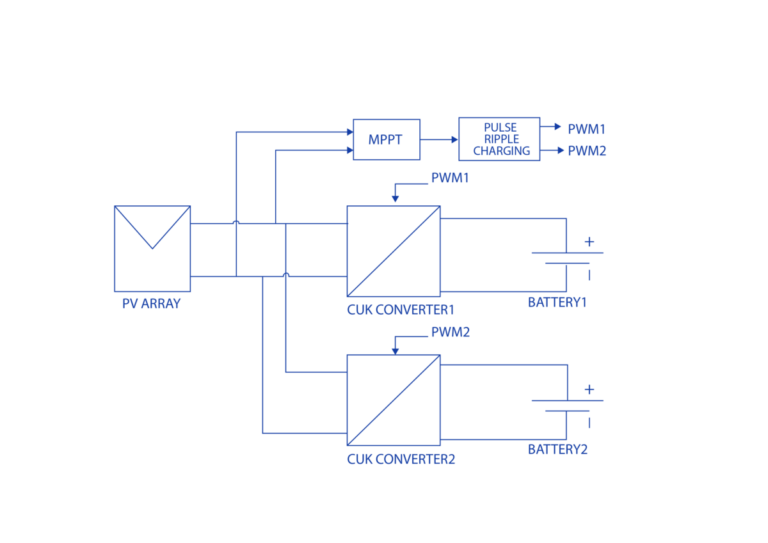Indian scientists have designed an off-grid energy system that relies on solar panels, lithium-ion batteries and Ćuk converters. The converters are the crucial components that enable the system to deal with varying input voltage due to changing sunlight conditions.
A group of researchers led by India’s Sardar Vallabhbhai National Institute of Technology has designed a standalone solar-plus-storage system for use in charging battery-powered road vehicles.
“The system is based on an advanced battery charge monitoring algorithm with positive pulse current (PPC),” said the study’s corresponding author, Ashish K. Panchal. pv magazine, adding that it relies on PV maximum power point tracking (MPPT) in mountaineering to extend battery life while utilizing maximum PV energy.
The proposed system uses two 40W solar panels, two 12Ah lithium-ion batteries and two Ćuk converters. These converters are often used transform a DC voltage at the input to a DC voltage at the output with reverse polarity.
The group explained that the Ćuk converters can ensure efficient power generation from PV panels, especially when the input voltage of the modules varies widely due to changing sunlight conditions. “Because Ćuk converters have high voltage gain, their versatility makes them ideal for PV systems that require varied voltage levels for different loads or battery charging,” the company further explains. “Cuk converters also produce a smoother output voltage by efficiently controlling the output ripple current.”
In the proposed system configuration, the Cuk converters are connected to the PV panels with the input ports, while the output ports are connected to the batteries. The system also uses an operating system to integrate MPPT with battery charging.
The PPC charging control technology is used to charge the battery with the solar panels. It works in three modes: PV with a single converter; PV with double inverters and in-phase operation; and PV with dual inverters and out-of-phase operation. “The fact that both inverters operate alternately when the system is operating out of phase means that PV power is used more effectively,” the scientists explain. “However, when the system is operating in in-phase mode, both inverters are inactive at the same time, wasting PV power.”
Their analysis showed that the third mode can achieve a PV panel utilization rate of 100%, while the percentage value for the other two modes is 50%. It also showed that the out-of-phase PPC operation is the best option to charge the battery faster. Out-of-phase operation is performed when the PV power is given completely to one battery at a certain time and another battery receives the full power from PV at the subsequent time.
“We have successfully tested and validated the proposed charger through experimental hardware,” Panchal said.
The academics described the system in the study “A standalone photovoltaic energy storage application with positive pulse current for battery charging”, published in the Journal of Energy Storage.
This content is copyrighted and may not be reused. If you would like to collaborate with us and reuse some of our content, please contact: editors@pv-magazine.com.


